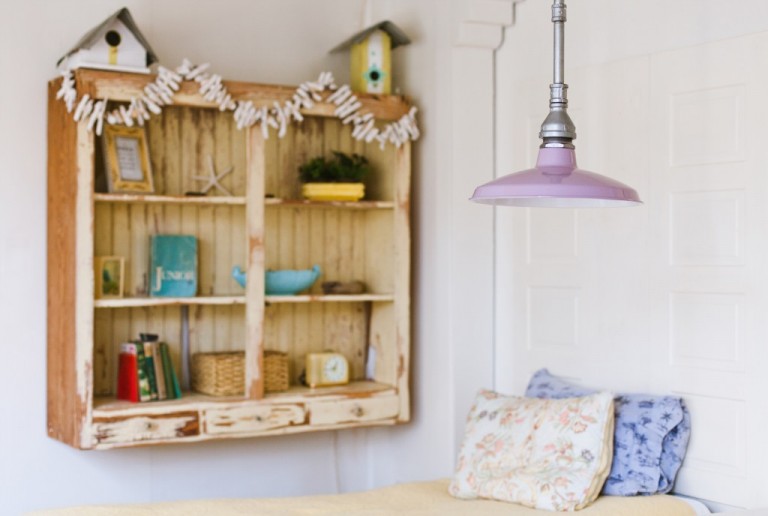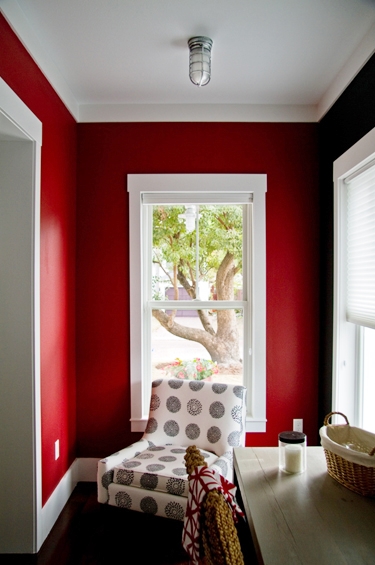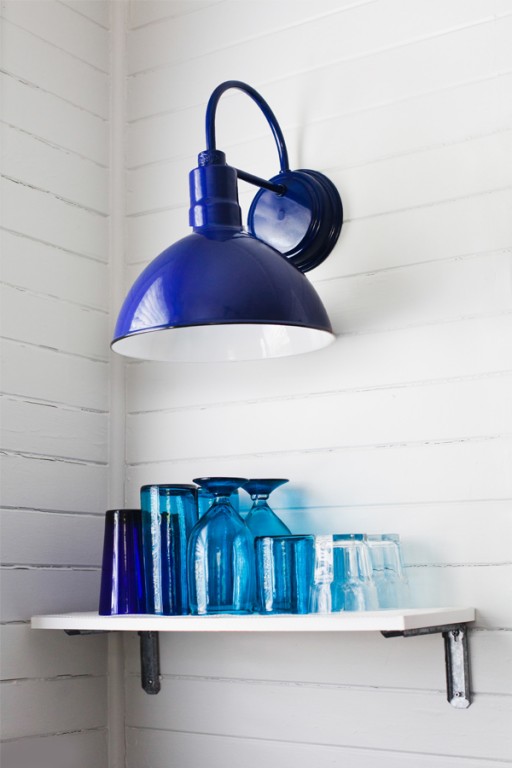
Guest Blogger | 6 Popular Interiors Colors & How They Affect Your Mood
With the drab and dreariness of winter (almost) behind us and the bright freshness of spring just ahead, now is the perfect time to think about adding color to your home. Whether you’re considering a fresh coat of paint or a small touch like a table lamp, the colors you choose can have a major impact on your space’s mood. Keep reading for a quick primer on some of the most popular interiors colors and the atmospheres they create.
Red
Red is one of the boldest colors you can use in the home. Stimulating, exciting, and powerful, red is known to increase appetite, imbue confidence, and convey power, courage, and fearlessness. Try accents in the kitchen to stimulate hunger (or avoid it there completely if, like me, you need zero help in that department) or try it in an entryway for a bold first impression.
Considered an ‘immediate’ color (meaning it feels closer than it is) an all red room can feel like the walls are closing in on you. Subtler tones or small touches, like the splash of red the Brisbane Stem Mount Pendant offers in the top photo, work best.
Blue
Blue is the color of purity, clarity, and tranquility. It promotes peace and harmony, making it especially suited for bedrooms and bathrooms where calmness is desired. Some blues, however, can come off cold, especially in rooms with little natural light.
To combat this, try warmer shades of blue, like these Navy Wilcox Uplight Pendants, or restore balance by pairing it with warm tones and accents (think navy and gold). Likewise, blues are useful for ‘cooling down’ sunny spaces.
Yellow
Yellow is often associated with focus and mental agility and is said to help with concentration. The color of sunshine, yellow is happy, joyful, uplifting, and life-affirming. Yellow is a great choice for kitchens and bathrooms, and works best as an accent to colors that balance its energy. It’s also a smart choice for small spaces, as it can make them feel more expansive. Just like red, though, yellow is best used in small doses or subdued shades.
Green
Green is symbolic of fresh starts, growth, healing, and rejuvenation. It’s the most restful color for the eye and is associated with nature, so it’s a great way to bring the great outdoors inside.
Combining the refreshing quality of blue with yellow’s cheerfulness, green can be used in virtually any room in the home, and different hues generate different moods: brighter and cooler shades energize, like the creamy Jadite finish on this Sinclair Pendant Light, while deeper and warmer ones are calming.
Purple
Purple is a rich, dramatic color that’s often associated with royalty, passion, and sophistication, as well as spirituality. Dark tones are best used sparingly in places where you want to impart a feeling of luxury, such as the bedroom or the living room. Light hues also do well in the bedroom, like this pendant, since they possess the calming effects of blue without the risk of feeling icy.
Orange
Orange is the color of creativity and youthful inhibition. It’s energetic, sensuous, and celebratory, and radiates a soft, warming energy. These traits make orange ideal for playrooms, exercise rooms, and other creative spaces.
Like red, it may also stimulate appetite, so small touches are often used in kitchens. However, use caution with orange in the bedroom – it can be overly stimulating in a space that should promote relaxation.
Guest blogger Melissa Andersen is a writer, editor, blogger, and social media manager/consultant for clients such as And North, Kaufmann Mercantile, and The Cousins from HGTV.










